|
.
1 | Music In The Post-Classical World
The Middle Ages
Peter
Kun Frary
.
Human history is divided in five epochs:
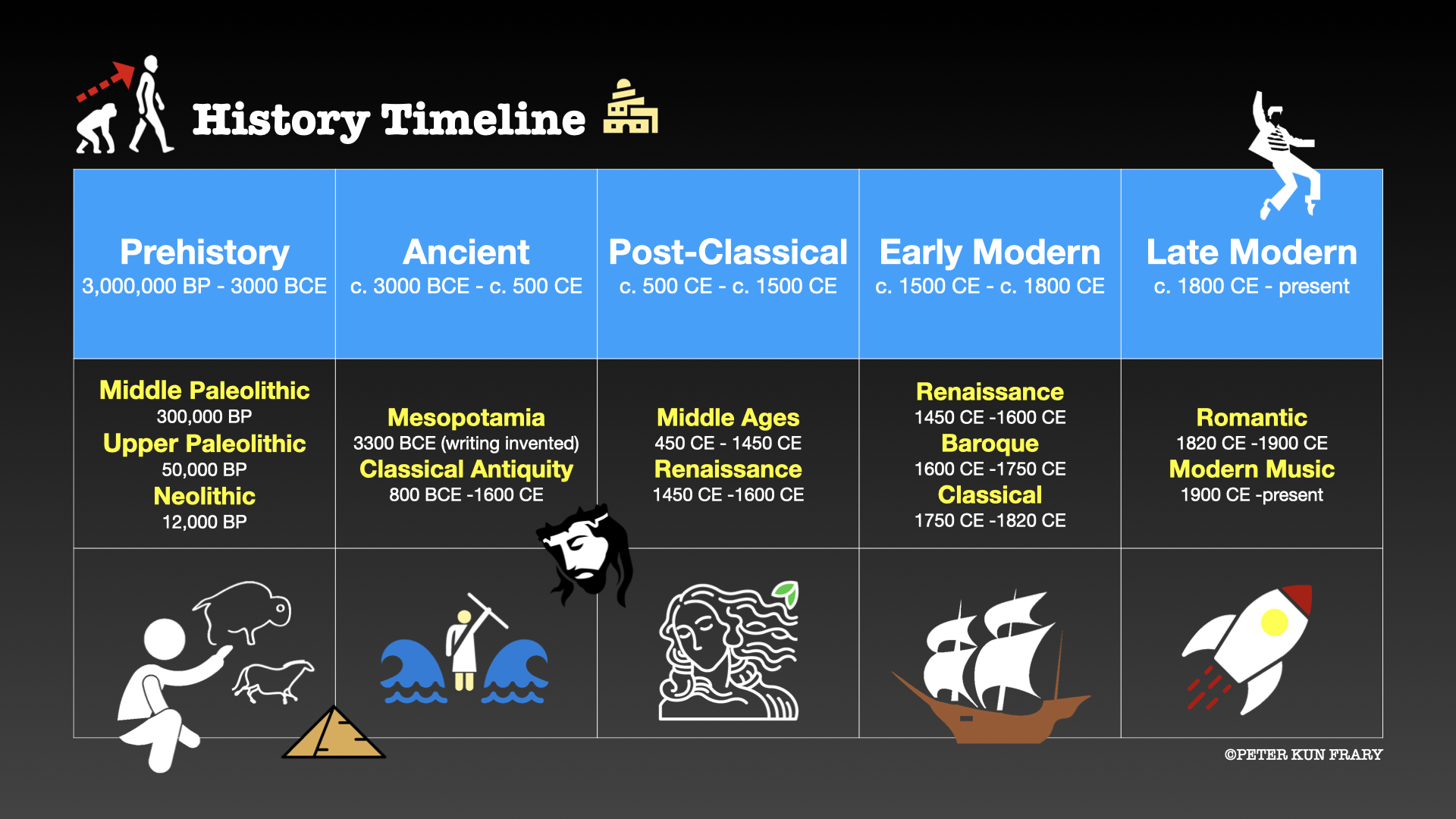
Prehistory and Ancient music were discussed in the Preface and Musical Elements unit. The remainder of this textbook focuses on the Post-classical period, Early Modern and Late Modern.
Stylistic Eras
In Western music history, the last three epochs are divided into smaller stylistic eras (in chronological order):
- Middle Ages, 450-1450 CE
- Renaissance, 1450-1600 CE
- Baroque, 1600-1750 CE
- Classical, 1750-1820 CE
- Romantic, 1820-1900 CE
- Modern, 1900 CE to present
We begin our journey with the Middle Ages but will stage musical excursions East and West as appropriate to each era.
Basilica di Santa Maria del Fiore (1296 CE) | Florence, Italy | ©Peter Frary
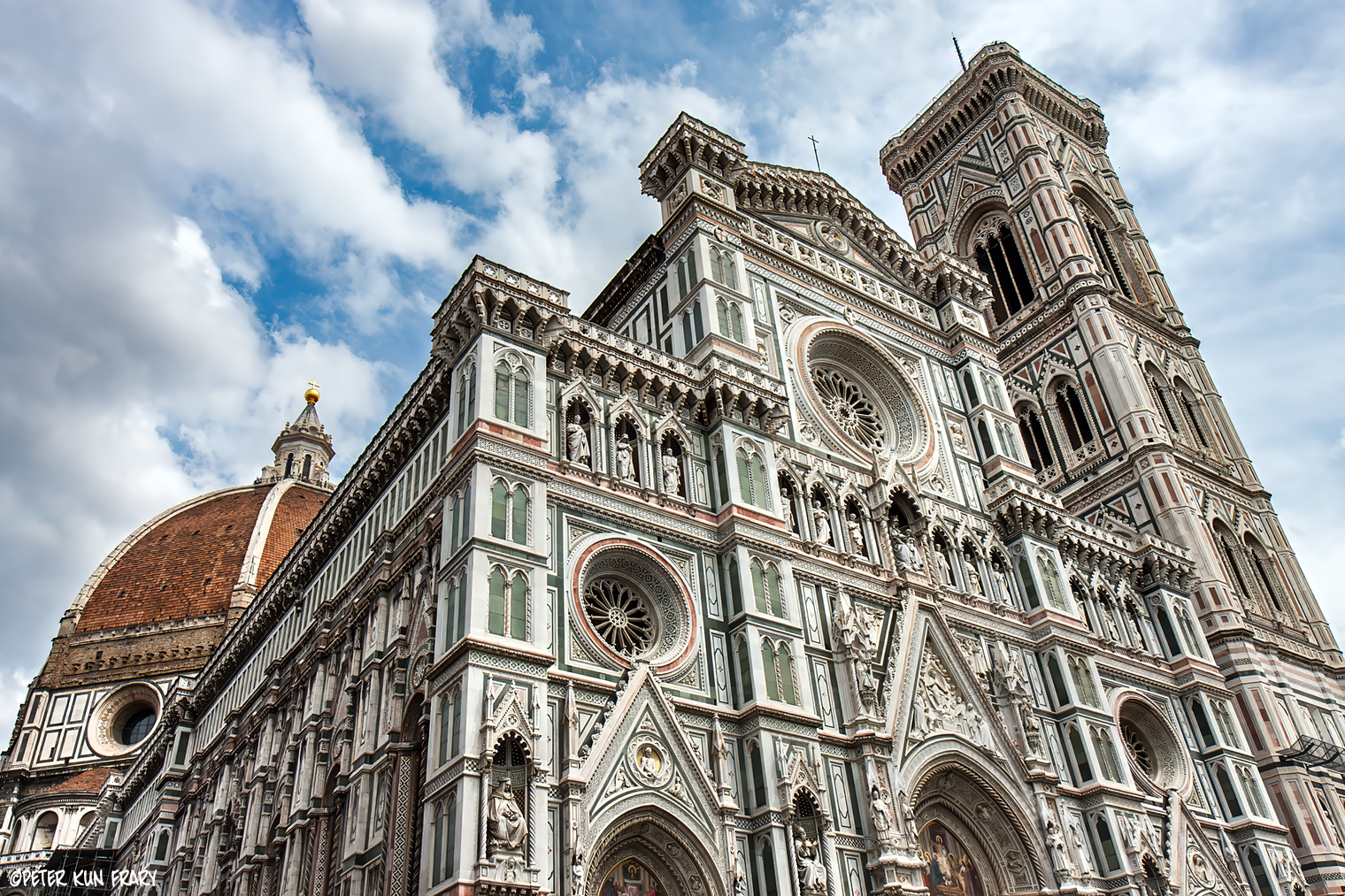
 Middle Ages Middle Ages
The Middle Ages (c. 450-1450), also called the Dark Ages, corresponds to the post-classical period. The Middle Ages began in Europe with the disintegration of the Holy Roman Empire, c. 450 CE, and is characterized by centuries of wars between civilizations; mass migrations; the rise of Christianity and Islam; and creation of vast trade networks. In Japan, this time was called the Nara period (710-794 CE) while the Tang Dynasty (618-907 CE) was in full swing in China.
Europe | Wikimedia Commons
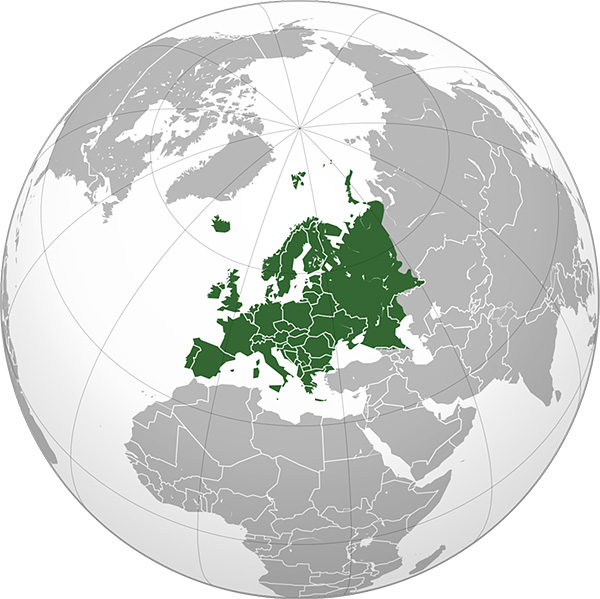
High Middle Ages
The High Middle Ages, made up of the Romanesque (c. 1000-1150) and Gothic (c. 1150-1450), is characterized by cultural growth: construction of towns, churches, monasteries and universities. Europe's population increased as agricultural and technological advancements simulated trade. During the High Middle Ages, Mongol armies marched into Europe, the Norse began colonizing North America, and Marco Polo (1254-1324), walked to China, inspiring generations of explorers by bringing back new food, materials, technologies and tales of distant lands.
Siege of Acre | Dominique Papety (1815-49) | Hospitalier Crusaders defending Acre, Israel, in 1291. | Wikimedia Commons
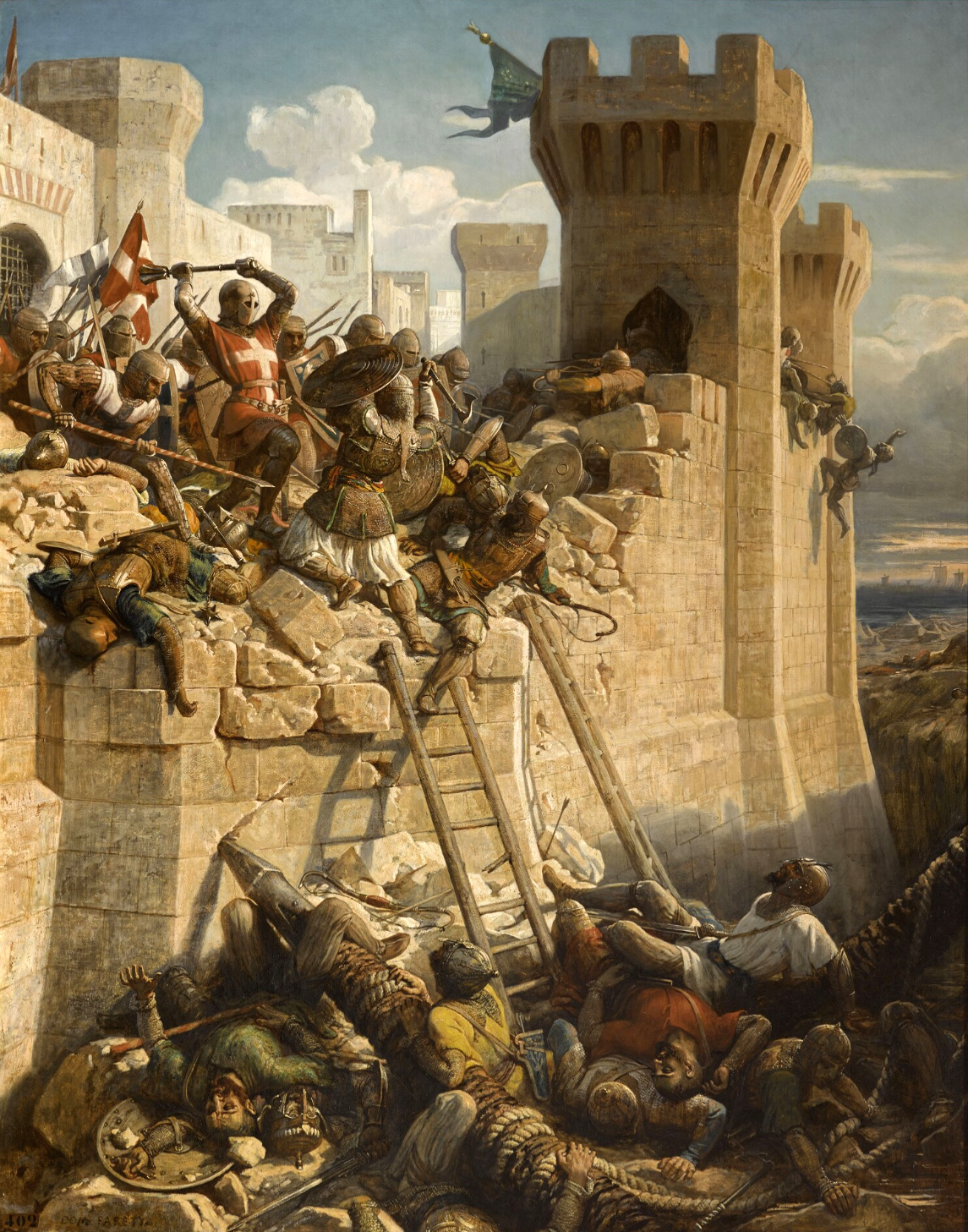
Religious Politics
The High Middle Ages was a time of religious conflict, both theological and militarily. The Great Schism of 1054 broke communion between the Roman Catholic and Eastern Orthodox Churches. The Vatican directed military campaigns, the Crusades, to wrestle the Holy Land from Islamic rule and gain political and territorial advantages in Asia Minor and the Middle East. The sacking of Constantinople in 1204, ordered by Pope Innocent III, included the shameless pillaging of Greek Orthodox churches and massacre of Orthodox Christians.
 Life in the Middle Ages Life in the Middle Ages
Medieval European society consisted of three social classes: nobility, clergy and peasantry. Most of Europe's population were peasants: bound to the soil with subsistence farming and subject to feudal overlords. Peasants rarely owned property, were illiterate and had a life expectancy of about thirty years.
Saint Basil Chapel (c. 1149 CE) | Bruges, Belgium | ©Peter Kun Frary
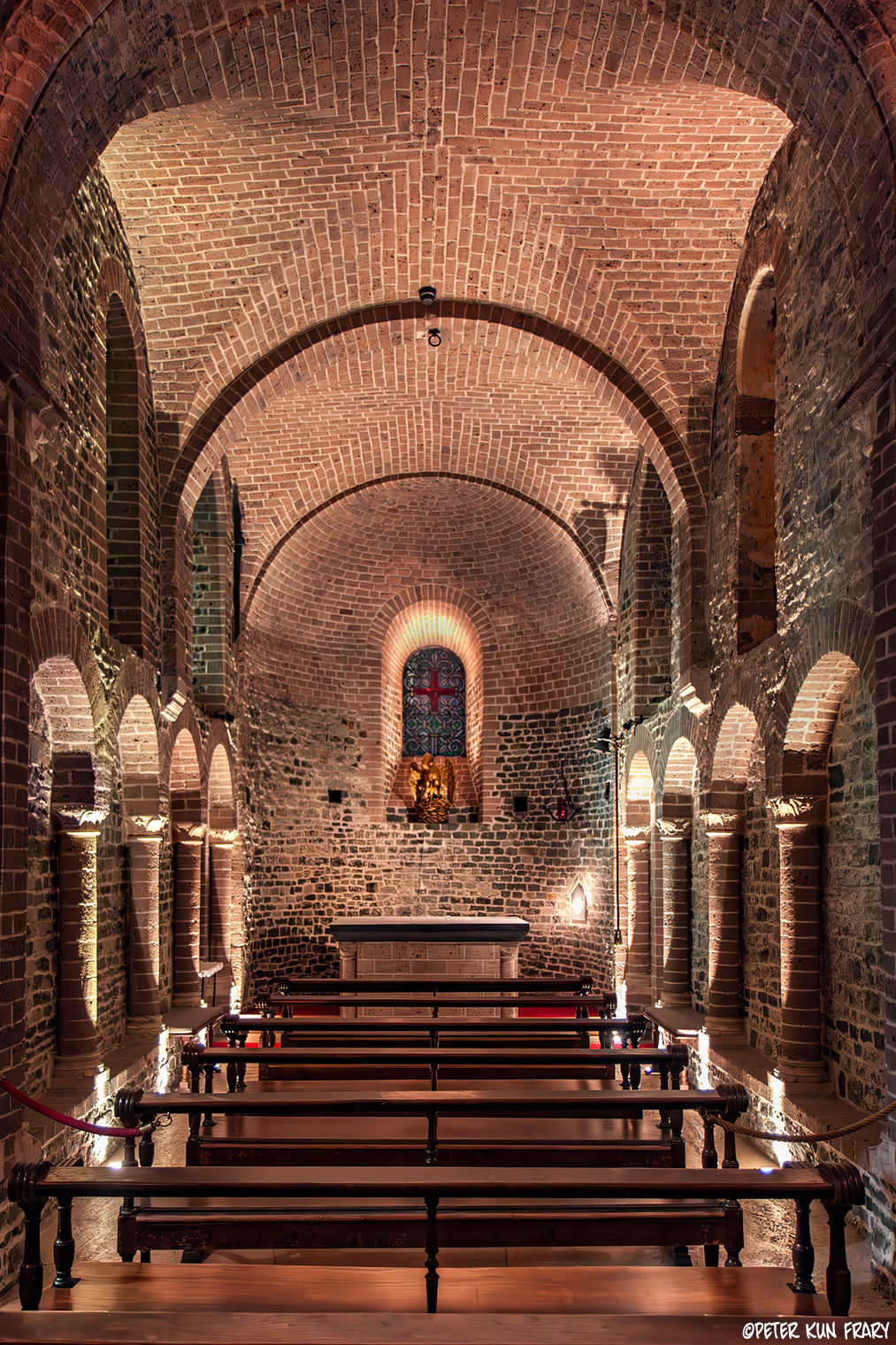
Nobility served as overlords of local lands, extracting goods and services from peasants living on their lands. These feudal overlords controlled the local military but themselves were subject to higher ranking nobility.
 Roman Catholic Clergy Roman Catholic Clergy
Clergy were the Illuminati of the Roman Catholic Church and had immense power, wealth and influence. Their power rivaled, sometimes exceeded, the nobility in political and military might. The Papal States, ruled by the Pope, controlled most of Italy and parts of France from the eighth to nineteenth centuries.
Education in much of Europe centered around the Catholic Church. Most people outside of the clergy, including nobility, were illiterate. Thus, historical records of this era are primarily from Church archives. The lone exception is Medieval Spain.
Christ in Majesty | Beatus of Fernando and Sancha, c. 1047 | Biblioteca Nacional
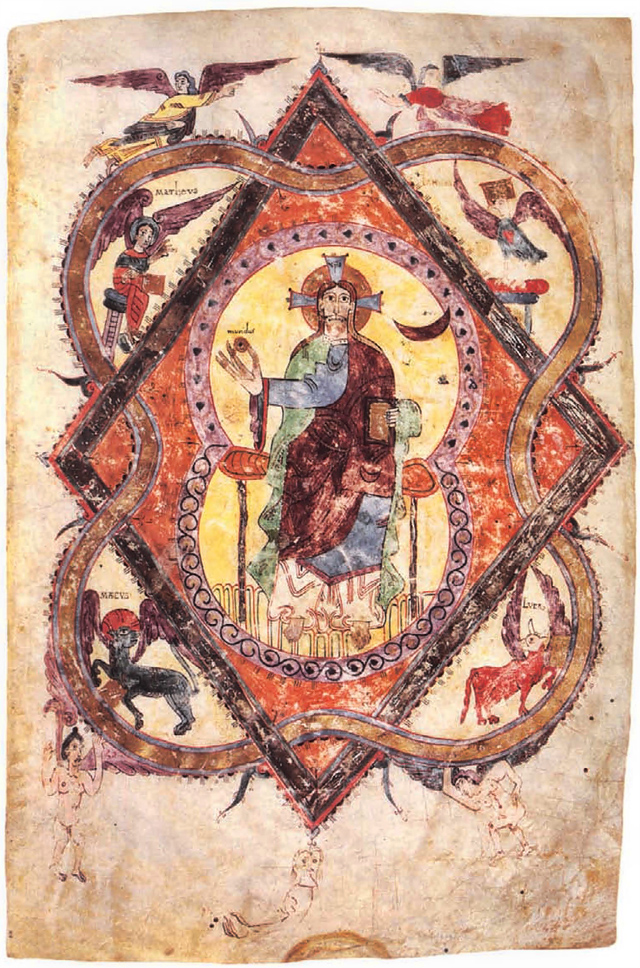
 Al-Andalus (الأَنْدَلُس) Al-Andalus (الأَنْدَلُس)
Medieval Spain and Portugal were called Al-Andalus, an Islamic state controlled by Moorish Kings—Berbers from Morocco—for eight centuries (711-1492). It was a more international and enlightened society than most of Medieval Europe, famous for art, architecture and centers of learning. Al-Andalus boasted a large population of Jews, Muslims and Christians living together in relative peace.
Al-Andalus | Moorish Kings ruled most of the Iberian Peninsula (green area), currently Spain and Portugal, for eight centuries. | Wikimedia Commons
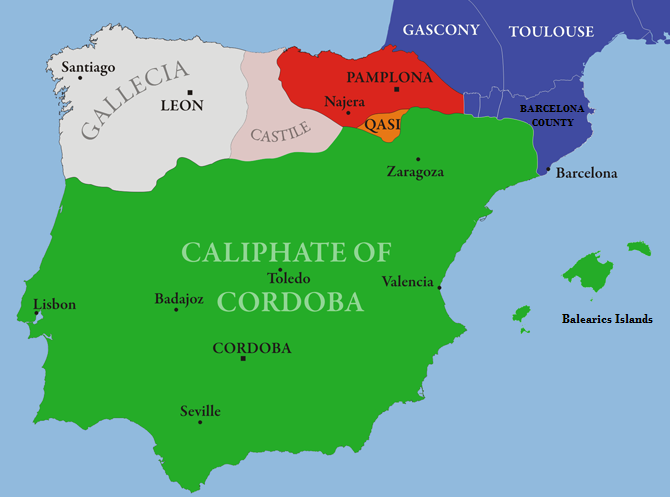
The impact of the Islamic world on Spain and eventually all of Europe was vast. The tourist destinations of the Alhambra at Granada and Great Mosque at Cordoba are visible manifestations of this heritage. Every aspect of European culture from food to language, art, literature, religion, science, music, medicine and philosophy were influenced by Spain's eight centuries of Muslim rule.
Alhambra | This palace was built near the end of Spain's Muslim rule by Yusuf I, 1333–1353, and Muhammed V, 1353-1391. | Wikimedia Commons

Moorish kings kept detailed records, built great libraries and founded a university at Córdoba. They brought new technologies, advanced mathematics, Arabic numerals, and modern architecture to Europe. Without their contribution we'd be stuck with Roman numerals! The Moors were also responsible for bringing many musical instrument families, including guitar and lute prototypes, to Europe.
The Capitulation of Granada | Francisco Pradilla Ortiz, 1848-1921 | Painting of the 1492 surrender of Granada's last Moorish king. | Wikimedia Commons

Al-Andalus faded from power in 1492 with the fall of the last Moorish city, Granada, to Ferdinand II and Isabella I. However, eight hundred years of Islamic culture still echo in Spanish music and may be observed in Spain's many architectural treasures and art. I am grateful for the introduction of the guitar family and not having to use Roman numerals for math!
Vocabulary
Middle Ages, Dark Ages, Prehistory, Ancient, Post-classical, Early Modern, Late Modern, Romanesque, Gothic, Al-Andalus, Moors
©Copyright 2018-25 by Peter Kun Frary | All Rights Reserved
|



